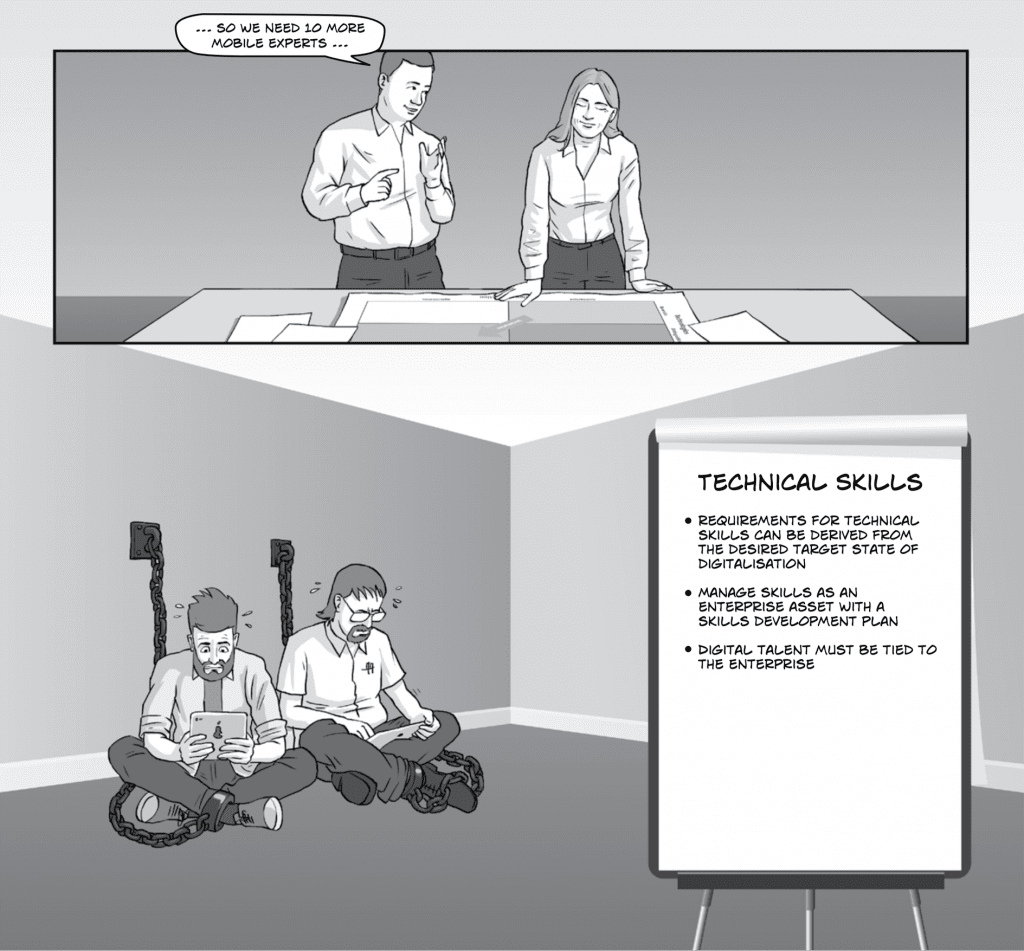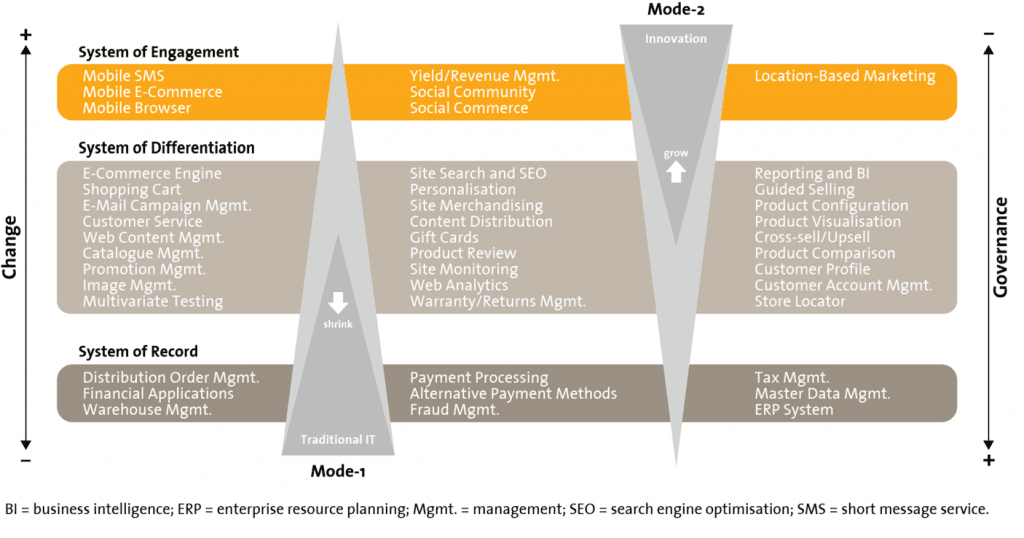‘An ape may on occasion use a stick to beat bananas from a tree, but a man can fashion the stick into a cutting tool and remove a whole bunch of bananas.’[1]
The ability to apply technical skills is at the root of human superiority over other animals. The simple stone tool, possibly the first technical invention, was used as far back as 2.5 million years ago; scientific methods helped create a formal basis for technology and flourished during the fifteenth century Renaissance; the Industrial Revolution followed a few hundred years later; twentieth-century technologies focused on automation and productivity; and computer-related technologies have been dominating the twenty-first century. Interestingly, the so-called digital technologies, a subset of computing technologies, have surged only for the last couple of decades, yet their impact has been explosive.
As we pointed out in on acquisition of digital capabilities, superior and appropriate technical skills are some of the necessary building blocks of the digital transformation of an enterprise. In fact, we explained in the ‘Digital in Action’ book how technology drives the digital transformation.
The difference in technologies, tools and methodologies between digital and traditional IT is often quite large. A strategy to balance the needs of day-to-day legacy business and the emerging digital transformation is to adopt what Gartner called ‘bimodal IT‘, also known as ‘two-speed IT’ or ‘multi-speed IT’[3] or a variation of the same (on previous page).Mode-1, made up of traditional software development life-cycle skills, mainly focuses on the longer-term IT projects typically directed at larger back-end record-keeping systems that evolve very slowly. Mode-2, using digital practices like Agile and DevOps, delivers projects much faster where the outcomes are frequently revised or replaced.
We can view technical skills through two separate lenses: ‘what technologies the enterprise must master’ and ‘how we should design and act using those technologies’. We can also recognise two categories of digital technology skills: ‘essential’, i.e., those basic ones that are almost always needed irrespective of industry or application, and ‘distinguishing’, i.e., those that provide special features unique to an industry or an application.
A quick summary of the essential technology skills:
- Enhanced data (multi-source, formatted and unformatted) collection, (big data) processing and analytics extracting actionable insights.
- Pervasive information integration providing ubiquitous and real-time information access to humans and machines, often done using application programming interfaces (APIs).
- Intelligent business processes supporting extreme process automation with end-to-end transaction visibility leading to high efficiency and instant feedback to the digital customer.
- Richly featured mobile apps handling a wide range of functionalities including product/service awareness, commercial transaction and payments and aftersales service.
- Responsive and intuitive multi-channel user interfaces enabling human users to interact with the offered products or services quickly and easily regardless of their access modes.
- Social media interactions facilitating product marketing and customer loyalty building, which may require exposing rich APIs and developing social media add-ons to products or services.
- Cloud sourcing of applicable technologies enabling quick and cheap acquisition of latest and advanced technologies and tools without heavy upfront capital outlays.
- Comprehensive security and regulatory compliance enforcement executed through transparent policies and lean (sufficiently adequate) governance and monitoring.
Some examples of distinguishing technical skills, which are typically industry-specific, are:
- Super- or ultra-fast computing, useful in certain special applications involving genetics, weather or financial analysis and trading.
- Sensors and Internet of things (IoT) with complex event processing (CEP) as in device-to-device communications, for example predictive maintenance and connected cars.
- Big data collection, storage and analysis, potentially required in applications such as next-generation customer relationship management (CRM), real-time marketing and fraud detection.
- Artificial intelligence and cognitive computing for self-learning machine applications.
- Drones for special surveillance or packet delivery applications.
Technology-related architecture, in all its variations, such as enterprise architecture, solution architecture and deployment architecture, is heavily impacted by digital transformation.
Besides just accommodating the new technology components, digital architecture must enable emerging digital business models, be capability (as opposed to only technology) focused, and support bimodal IT and business agility by design (e.g., use of microservices and cloud-based services and infrastructure). An example of newer technology practices that complement digital technologies and architecture is the combination of agile development methodologies with DevOps to facilitate frequent release, say in days, of products using an automated chain of ‘concept to development to testing to deployment’ activities. Acquisition and retention of technical digital skills are among the greatest challenges of digital transformation.[2] Hence, dedicated leadership attention from the CDO Office and innovative HR practices are critical to closing this skills gap.
And, besides developing digital talent from within, a company must also consider external sources such as consultants, partners or M&A to be just as important a part of their technical skills acquisition strategy.
_____
[1] Sofroniou, A.: ‘Technology, A Study of Mechanical Arts and Applied Sciences’, lulu.com, p. 59, 2013.
[2] Daub, M., Wiesinger, A.: ‘Acquiring the capabilities you need to go digital’, McKinsey, 2015.


